Meet Alessandra Acierno
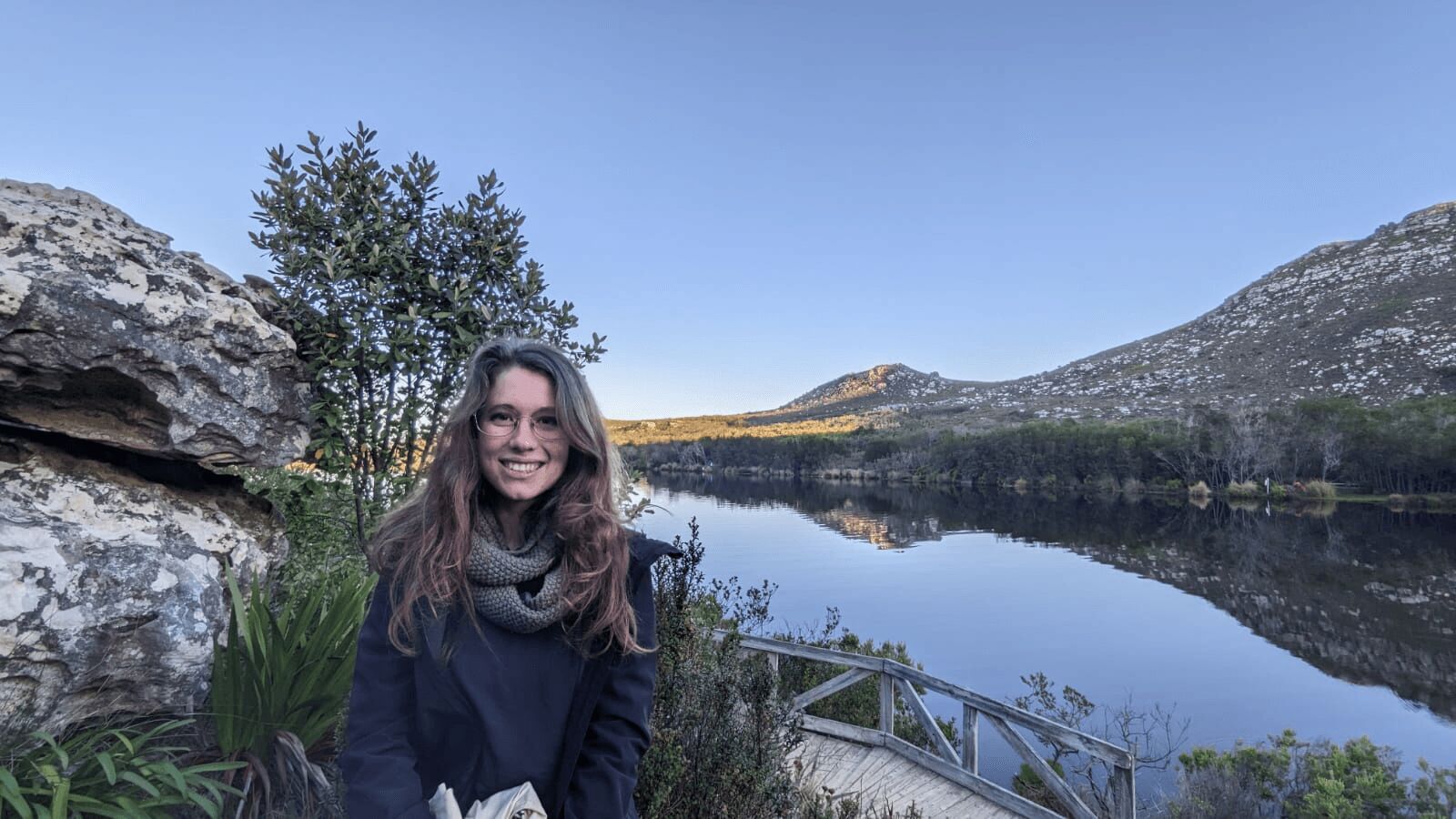
We had the good fortune of connecting with Alessandra Acierno and we’ve shared our conversation below.
Hi Alessandra, what are you inspired by?
I am most inspired by ambiguity. I remember my first powerful reactions to art and literature were to those works that left me questioning. With books from my adolescence, for example, I would be aroused by a certain indefiniteness of experience, by a character whose intentions and actions existed outside comfortable moral and social dichotomies. This is still something that speaks to me. I often gravitate towards literature with morally ambiguous characters – like the Magistrate in Coetzee’s ‘Waiting for the Barbarians,’ or Meursault in Camus’ ‘The Stranger.’ The notion of The Absurd is also something that inspires me. I am intensely drawn to coexisting incompatibilities. I feel that this is the closest approximation of truth.
In fine art, these interests have manifested in a life-long obsession with figurative and narrative painting. I’m one of those painters who secretly wishes she could be a writer but lacks the fluency. My language, it so happens, is visual. But narrative, whether fractured or obscured or implied, is central to my practice as an artist.
My current body of work is most influenced by Kafka and Balthus. Balthus is really one of those figures whose paintings epitomize this ambiguous zone that I find most compelling. A work like Thérèse Dreaming is so unsettling for this very reason. Taken as an instance, it’s quite innocent: a girl of maybe 12 reclines alone, thinking, a cat at her feet. But with the introduction of the viewer, the work becomes morally wrought. Why are we seeing her in this particular moment, in this particular pose? Like with Nabokov’s Lolita, the viewer becomes complicit, her gaze dictated by the artist, directed at something that feels unsavory to witness. It is a work that does not sit comfortably, and this discomfort, which forces us to question, is what I find at the core of all inspiring art.
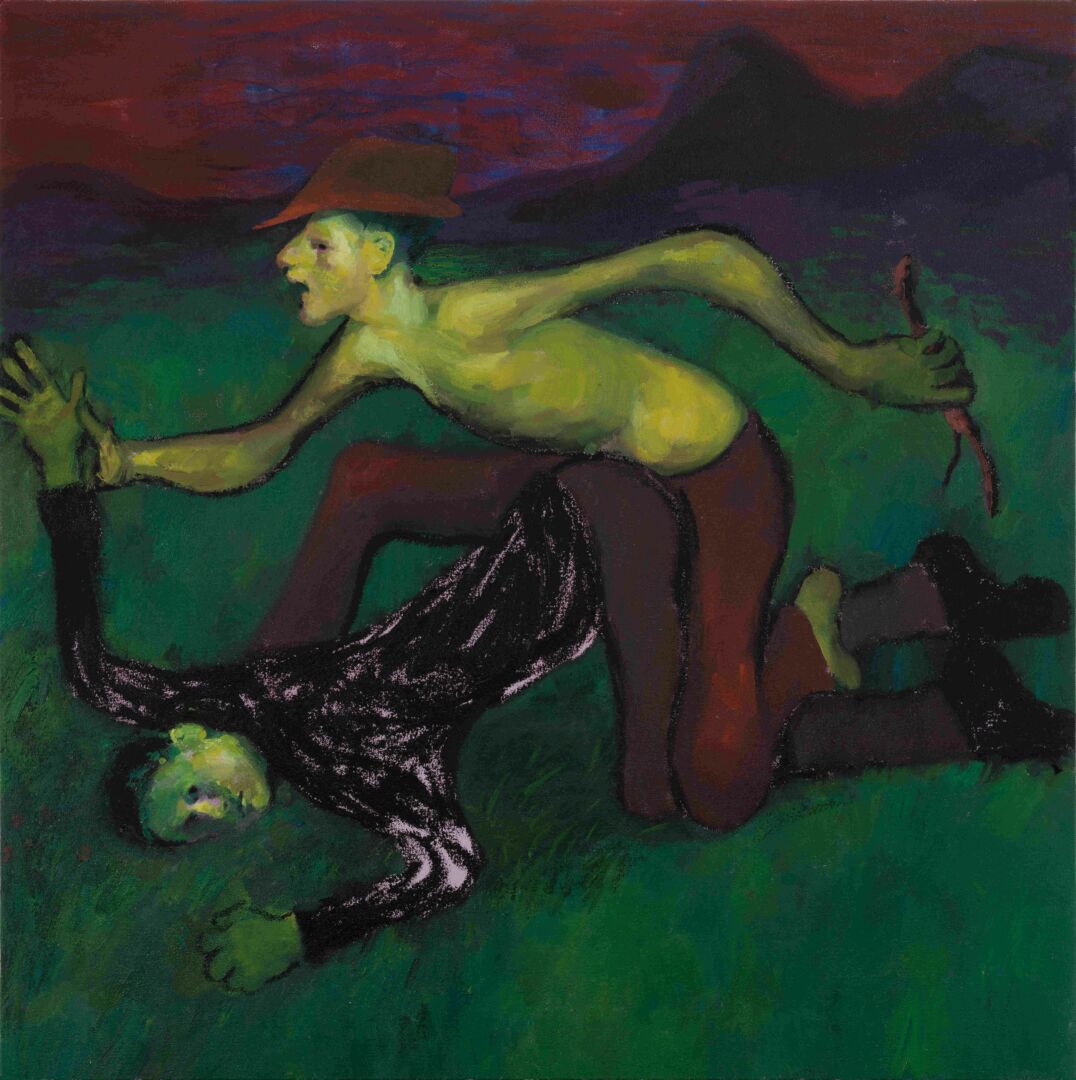
Let’s talk shop? Tell us more about your career, what can you share with our community?
Speaking generally, as a painter, I’m interested in the notion of an ‘encounter’ – a fleeting, charged interaction that teeters on the border between states. I see the painting itself as a moment of encounter. Within the boundaries of a piece, once-familiar objects and places shift, assuming strange qualities. Kafka’s Gregor Samsa awoke one morning from uneasy dreams and found himself in his home, but entirely transformed. It is this metamorphosis, this state of slippage, that currently occupies my work.
As for the external or ‘professional’ side of being an artist, I feel it is a commitment to being relentless (and a bit monomaniacal). I almost see it as akin to joining a monastic order; it’s a way of existing in the world. It means persisting even if no one is looking (which can be discouraging), and if someone is looking (which can be terrifying). I remember a comment a standup comedian made in an interview that really resonated with me: he said that the path to being a successful standup comic, the path that includes years in dingy clubs, and bombing, and travel, and rejection – this path, which every successful comic travels, is identical to the path of an unsuccessful comic. I think it’s the same in fine arts. You have to be committed to the act, fiercely, blindly, at times. You have to precede as if there is someone watching until eventually, perhaps, there is.
I’ve found that in this process, it is essential to share the path with others. Find people who are genuine and kind. Make connections that are based on mutual trust and care rather than empty professionalism or careerism. There are so many talented, warm people out there to collaborate with. Make those people your community.
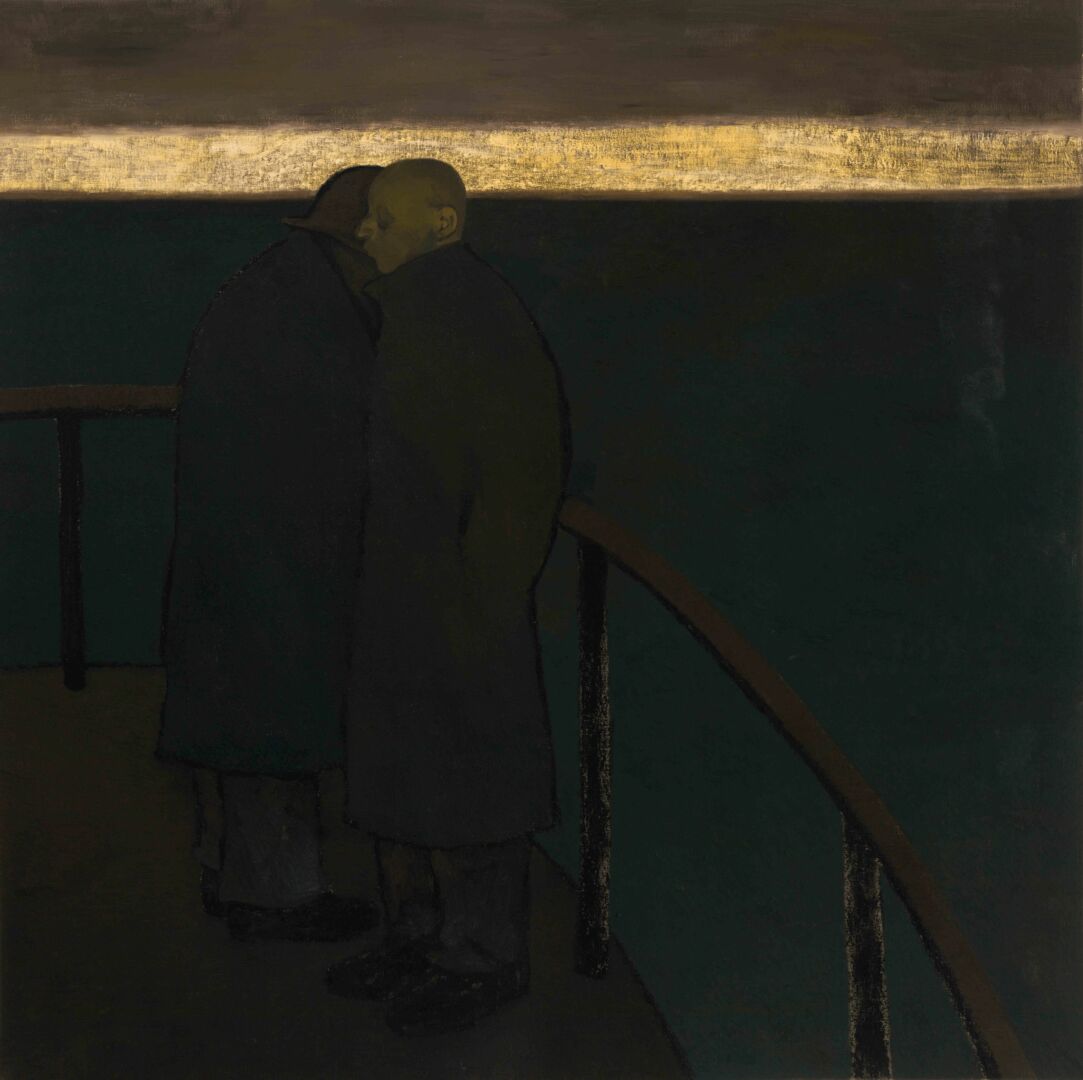
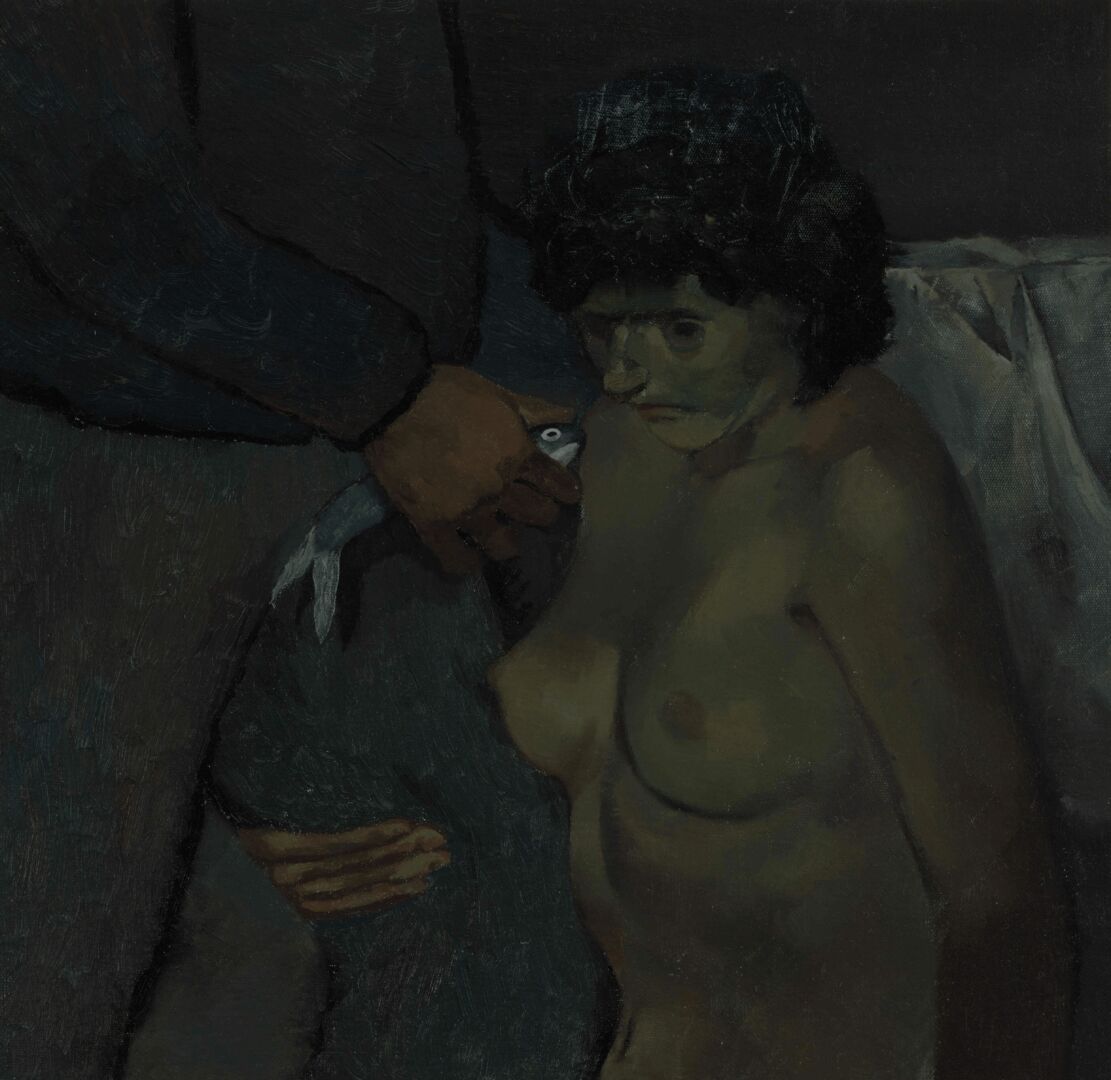
Let’s say your best friend was visiting the area and you wanted to show them the best time ever. Where would you take them? Give us a little itinerary – say it was a week long trip, where would you eat, drink, visit, hang out, etc.
I am currently based in Tel Aviv, Israel, and there is so much to do here in terms of culture, food, and nightlife – almost too much. Regarding accommodation, I would recommend that a friend stay in the Old North in an Airbnb. These are generally more affordable than hotels here and you will be close to innumerable restaurants and cafes – not to mention the beach, which is a short walk away. Tel Aviv is highly walkable, especially in the fall and winter, and has pretty reliable public transportation, so I definitely would not recommend renting a car (also parking is a nightmare, and people drive like they are in a boxing match, so not the most pleasant experience!).
In the first few days, I would take my guest to the Tel Aviv Museum, which has a phenomenal building designed by Preston Scott Cohen and a fantastic collection of art. Then, we might pop into Sarona Market, which is a bit touristy but has a wonderful seafood restaurant called Fishshop (order the seafood linguine or the fish and chips – you won’t regret it!). Later, we might walk along the boardwalk connecting Herzalia in the north to Bat Yam in the south. If the weather were nice and one was so inclined, one could walk there for hours looking out over the sea.
On another day, I might take my guest to the Bird Hide in Ayalon Park. If you go at sunset, the jackals come out and you can watch them frolic. Of course, since we are in Israel, I would also take them to get hummus. My favorite is Abu Adam in downtown Tel Aviv. But if you want to try msabbaha – a lemony variation of tahini mixed with warm chickpeas – you must visit Abu Hassan. For the best sabbich – Ovad’s in Givatayim. For falafel, Falafel Johnny’s near the Carmel Market.
I would also take my guest to see Tel Aviv’s Bauhaus district, known as the White City, with a stop at the Liebling Haus, a museum at its center. We might then have a coffee at the nearby cafe Shneor before continuing to the Carmel Market for some sensory overload.
As for something off the beaten path, I would recommend Kiryat HaMelacha in Tel Aviv. Over the years, this old warehouse district has been transformed into a major community of creatives. Among this industrial concrete maze, you will find workshops, artists’ studios, stand-up clubs, street art, restaurants, galleries, and more.
There are so many fantastic places to visit – not just in Tel Aviv, but throughout the country – that to list them all would take a book! So I’ll limit myself to a few highlights: The Israel Museum in Jerusalem, hiking in Sde Boker in the Negev desert, Park Britania in central Israel, the Bahai Gardens in Haifa, the Old City in Yaffo, the beach anywhere (my father-in-law will disown me if I fail to mention the beach). If you are a fan of beach sports, try out Matkot, which is somewhat akin to pickleball and very, VERY popular here. And noisy.
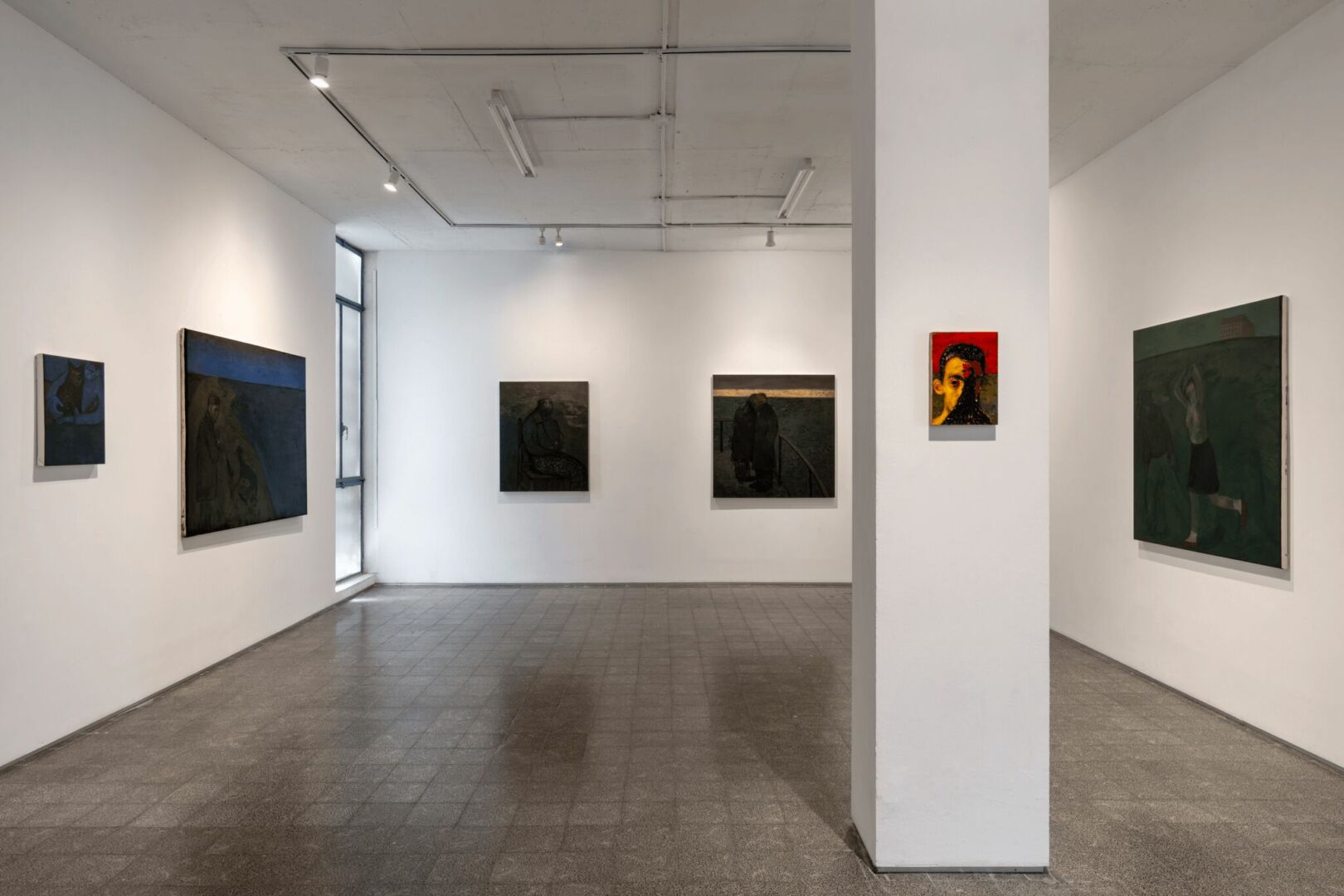
Shoutout is all about shouting out others who you feel deserve additional recognition and exposure. Who would you like to shoutout?
It’s cliche, but I think the environment created by my parents when I was a child is a major aspect of me being an artist today. There wasn’t a sense of this or that topic being taboo; I could draw or paint strange images without the school shrink being called. And my mother is extremely creative. She teaches architecture, and her house is a menagerie of craft, collection, and inspiration.
In my adulthood, I’ve had many inspiring and supportive figures. My partner, Guy Moshayov, who is an accomplished painter himself, is endlessly nurturing. In undergrad, professors like Dominic Terlizzi, Rex Stevens, Sangram Majumdar, and Timothy App from the Maryland Institute College of Art really changed my perspective as a painter and helped me grow as an artist. But I also owe a great deal to my kind and talented peers – people I’ve met over the years and around the world who have encouraged, challenged, and inspired me. Recently, I lived in Cape Town, South Africa, and the art community there was extremely supportive. The artists Diana Vives and Douglas Gimberg (her partner) were incredibly welcoming and generous, sharing resources, and including us – my partner and me – in their community.
No one thrives in a vacuum. Anything and everything I accomplish traces back to the people in my life.
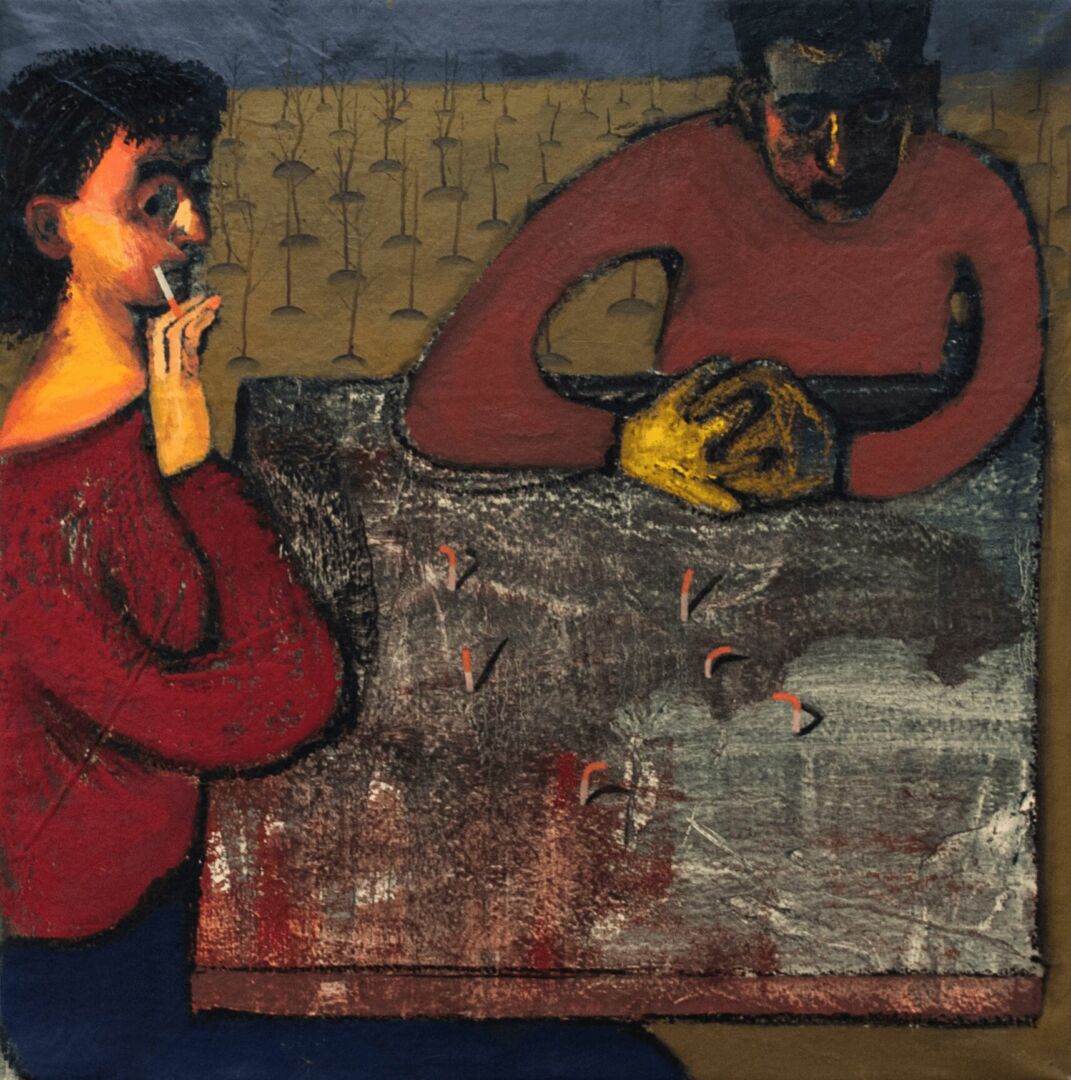
Website: alessandraacierno.com
Instagram: https://www.instagram.com/alessandraacierno/
Image Credits
Artwork images by Mia Thom Installation shots by Daniel Hanoch
